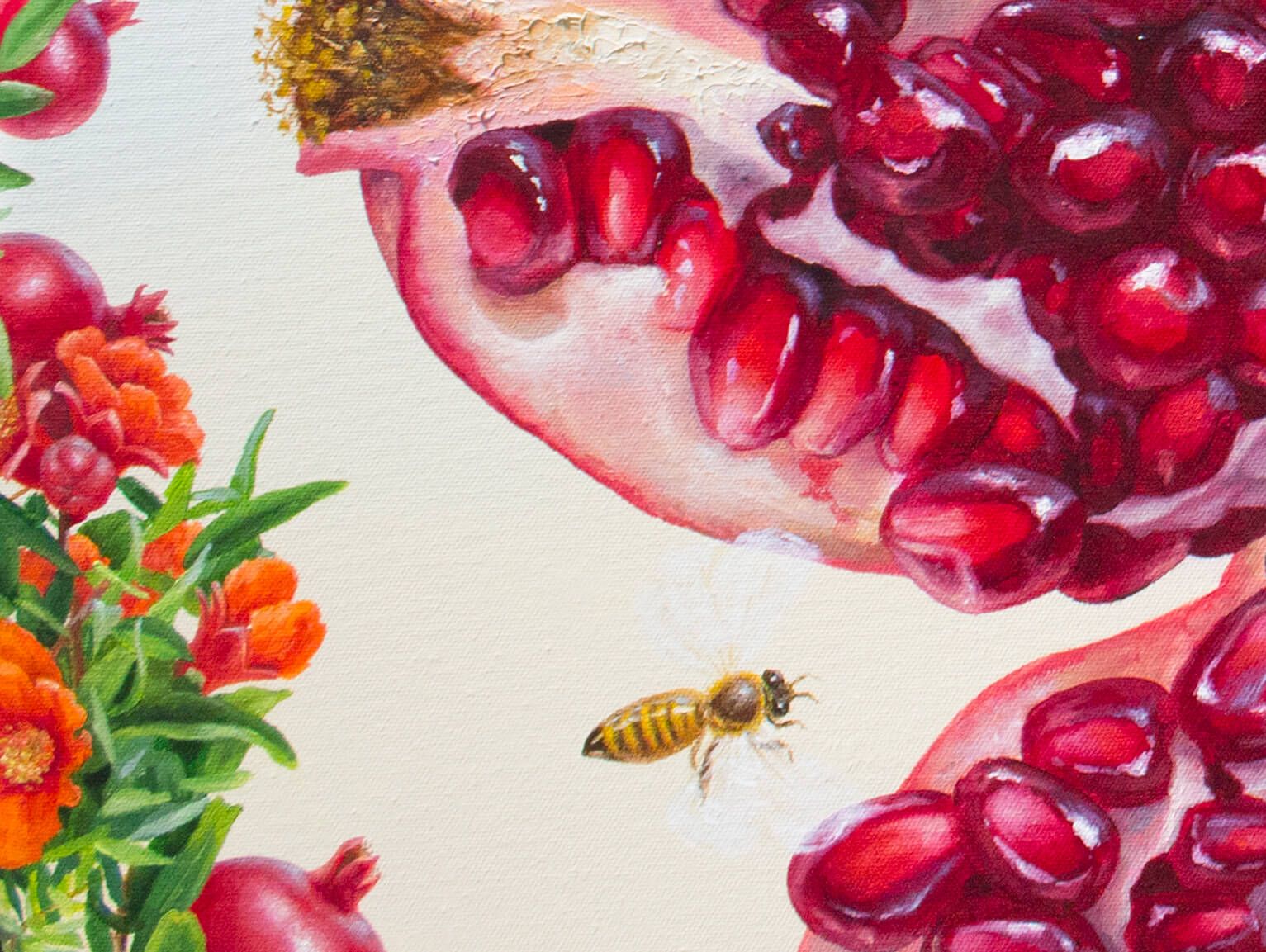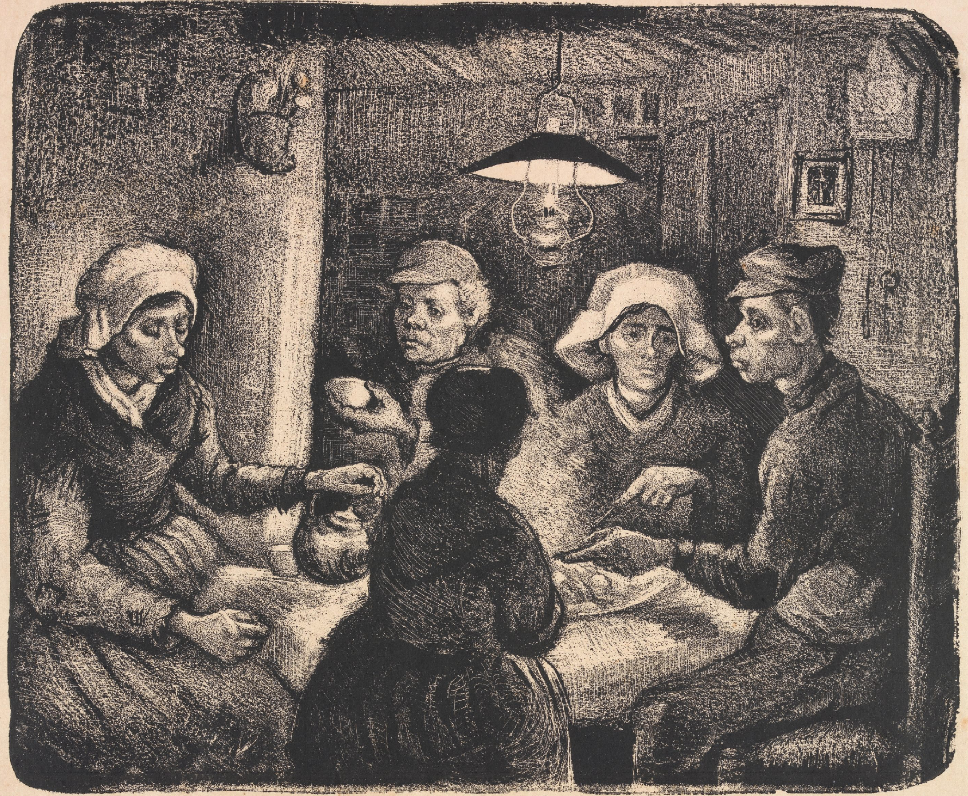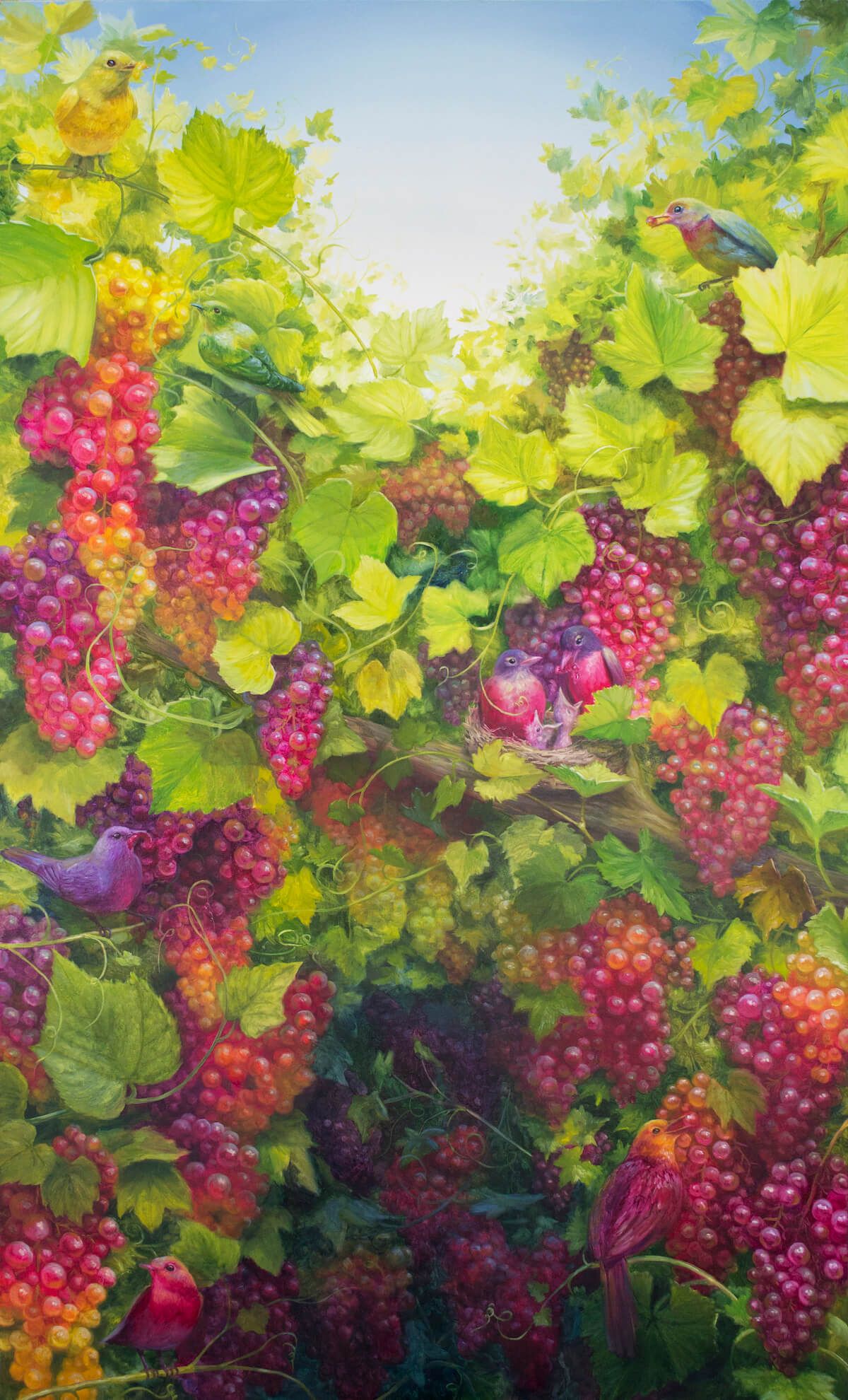Immortalizing the things we love
This is what the art of photography offers us, a medium through which we can preserve things and situations that mean a lot to us and pause time to take pictures of them in all their splendor. This art not only gives us the opportunity to immortalize those things that are dear to us, but also allows us to see them from a new and beautiful perspective.

Photographer Abdullah Al-Shaikh.
Since 2002, photographer Abdullah Al-Shaikh has been capturing the magic of his city - Al Ahsa - in stunning photographs. For Al-Shaikh, Al Ahsa is an artistic painting full of wonderful surprises that awaits the moment of its photography and immortalization. His photos - and in particular his aerial photos - are distinguished by their ability to show new dimensions and angles to the places and stories that are in front of his camera lens.
This photographer’s career is full of unique achievements, including one of his photos being chosen as the cover of the October 2018 issue of National Geographic magazine. He also won many local and regional photography awards, and currently works for the Eastern Province Development Authority as an aerial photographer, working on photography and documentation of several projects for the Ministry of Tourism, the Ministry of Culture, the Entertainment Authority, and many other entities.
In this interview with Ithraeyat team, following an exhibition of his photographs as part of an exhibition at Ithra titled ‘From Earth,’ – that focused on Saudi artists’ relationship to the natural heritage and landscape of Saudi Arabia and their significant impact on the artists’ form of expression – Al-Shaikh talks about his beginnings in photography, what the city of Al Ahsa means to him, its place in his work (and his heart), and other interesting details related to his career.

Group dining - photographed by Abdullah Al-Shaikh
My beginning was when I was watching some clips previously broadcast by television to a number of regions of the Kingdom. Those clips attracted me, and I always try to contemplate their details and magnificence, especially those captured by planes or from high places, as they highlight details and features that the naked eye is sometimes unable to comprehend.
This matter attracted me towards the lens and the light, especially since I was born in Al Ahsa, which I see as a unique painting. Every day you see a new sight and beauty that you have not seen before. This is what pushed me towards the world of photography, so I started my career in it and was attracted to it, because I felt that this art allows people to express themselves without writing a single word, and it makes me feel that I am a human voice when the shutter sounds in the camera to announce the cessation of a moment of time. There were moments in which I held my breath a lot, waiting for the output of the lens, while I was suspended between the hope that the photo would be as I imagined it, and the fear that the photo would not be successful.
As for the field of aerial photography, it is an ocean without coasts; it is a wide world and an extended horizon, full of details and challenges, and as I mentioned to you, when you see the scene from above, your view of the world differs, as you see the very big picture, and focus on drawing a consistent color palette with a variety of details and rich meanings.
The opening shots in many programs, shows and films, which start from the wide horizon full of details to the narrow corner full of stories, drew me to this field, so I desperately wanted to be a part of it. I didn't expect to achieve much of what I achieved, but my success was from Allah and through Allah’s will.
It was a challenging experience since at that time photography was not seen as an important profession, and it did not receive the necessary attention. The resources, knowledge and information that were available at that time were limited and difficult to access, in addition to the small number of stores that provide equipment within the Kingdom in general and in Al Ahsa in particular, not to mention the high costs of equipment due to the lack of demand for it.
Also, that period witnessed the beginnings of the shift towards the digital image, and the proliferation of digital cameras, which were considered a revolution and a transformation at that time. I suffered - as did my colleagues - during that period from the issue of preserving rights with the beginning of the spread of Internet forums and websites, which used to take pictures and materials without citing their source, falsely thinking that if the photographer published the picture on his personal website, it becomes a common right and it is permissible for anyone who wants to benefit from it and use it without control. We still suffer today from this culture that reduces the work and effort of the photographer, and violates the rights of creators, claiming that the article is available on the web, despite the regulations and penalties issued in order to preserve rights and protect them from infringement.
The beginnings were a difficult stage. Sometimes the photographer was prevented from photographing some sites under the pretext of not having a permit, yet there was no clear mechanism for obtaining permits, and the training courses and programs were not as popular as is the case today. You simply had to try, make mistakes and learn from those mistakes, so I worked on honing my skill and started working and learning from my mistakes, trying to search the Internet for new things in this field, and always experimenting and trying.
In addition, I had full support from my parents and family, as I always tried to prove to them that my passion would one day lead me to achieve an accomplishment that they would rejoice in, so their words were encouraging and motivating me.
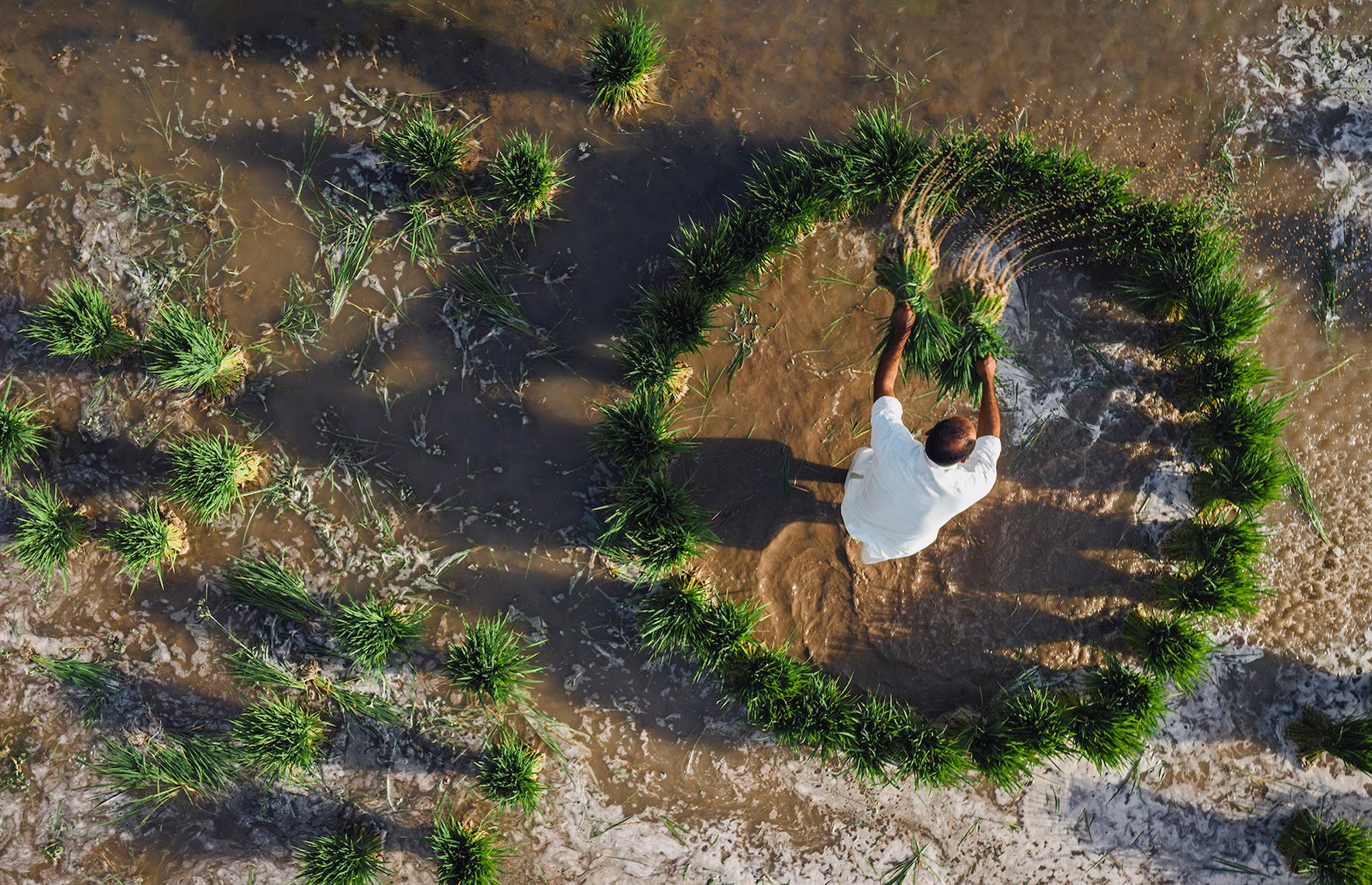
Al Ahsa living - photographed by Abdullah Al-Shaikh
Certainly, there were groups of amateurs, along with a few professionals, who met in periodic meetings and events related to photography. We were like a permanent workshop, passing on experiences and knowledge and benefiting from each other, and we were working to continue our efforts and work.
I don't have a real preference for any camera, but I do have a soft spot for the one that took my first published photos and launched me on my road to more success.
And as you know, the rapid technical development puts the photographer in a constant challenge to acquire the latest machines and technologies that help him achieve the best outputs, so you find the rate of exchange and replacement among professional photographers very high, as he is in a race with his colleagues to win the latest releases and obtain the latest equipment to keep pace with this development. But as an aerial photographer, I prefer the drone that responds to my mental perceptions of the photo I want to choose. I need to it respond to me when I want it to rise more and more, and it makes me happy that it responds to my artistic vision in the creative shot, and bears various circumstances, and overcomes them so that the “photo” becomes a moment of time as I like and as I want.
This photo is one of the important moments in my life, with which I felt unparalleled pride as the ambassador of my dear country on the cover of an international magazine, and conveyed the beauty of Al Ahsa and its rich history. Whenever I see the cover of the magazine, I feel grateful for every moment I spent moving between locations searching for knowledge and skill in the field of photography, and for every moment I spent learning, trying and challenging myself.
My happiness was indescribable when the United Nations Educational, Scientific and Cultural Organization (UNESCO) announced adding Al Ahsa Oasis to the World Heritage sites. At the time, I felt that this land exchanged love and peace with the world, and I felt that it was my duty to redouble my efforts to highlight its civilization and history.
It was an important and pivotal point in my life, to move from publishing on the Internet to prestigious magazines, not only on an inside page, but on its cover and for the feature topic. It is an unforgettable moment in my life that took me to a new level of challenges, and put a weight on my shoulders towards my family and my city that I love.
His Royal Highness Prince Sultan bin Salman bin Abdulaziz, President of the then Saudi Commission for Tourism and National Heritage (before it became the Ministry of Tourism) , showered me with abundant words of thanks and compliments, and motivated me to do more when he assured me of the trust of the Custodian of the Two Holy Mosques and His Highness the Crown Prince in the Saudi youth and their abilities, and those words inspired me to do more and compete at the regional and international level in various events.
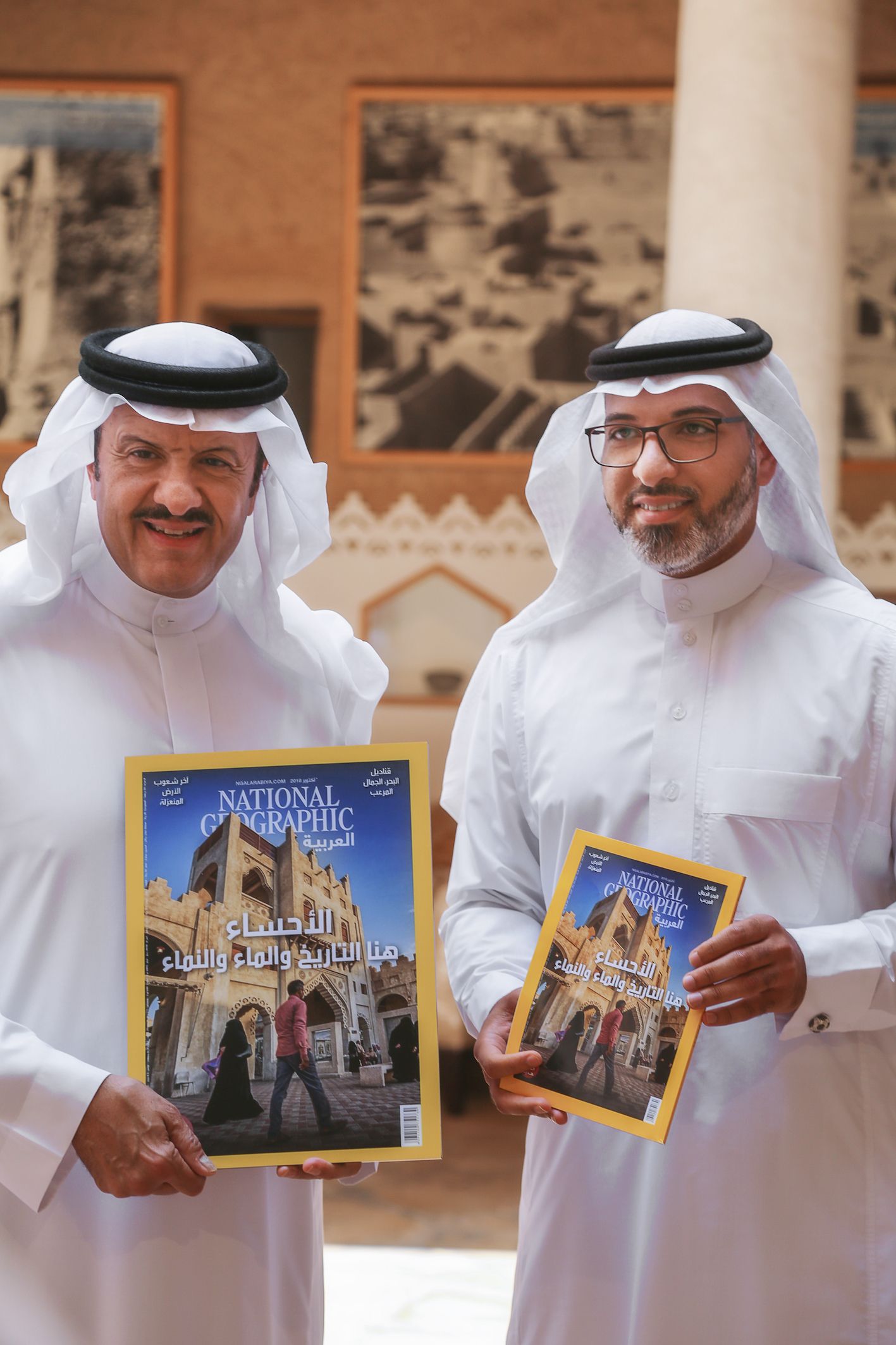
Prince Sultan Bin Salman with Photographer Abdullah Al-Shaikh
If I say that I love Al Ahsa in all its details, I am not exaggerating. I love every moment I spend in it, I love its sprawling palm trees that inspired me to glory, I love its people who taught me simplicity and extravagance, I love its markets that made it their own splendor, its mosques and heritage palaces that painted the pages of the past, I love its renaissance and urbanization that combined tradition and modernity, I love its eyes that exploded generosity and giving to the earth and human, I love its dates that make you forget the bitterness.
If I say that everything in Al Ahsa is beautiful, I am not exaggerating! One should not be shamed when he describes his beloved, and Al Ahsa and its oasis are my beloved. No matter how much I say about its description and its love, the letter falls short in value and stature.
Every photographer has a side of photography that appeals to him, and let me admit that I generally focus on natural and architectural photography, but the Al Ahsa table pulled me in a lot, specifically its richness in natural and varied ingredients, which represent an integrated and unique diet.
And because this diet is an integrated chain of production, starting with the farmer’s effort and toil on his land, and ending on the table, I decided to document the stages of this chain, from when the farmer starts planting and watering it, passing through the stages of follow-up, harvesting, selling, and ending with the integration of this product with various products and foods on the table. I wanted it to be a "panoramic" photo with a variety of details, embodying the value that emerges from Al Ahsa farms, which were never limited to dates, but rather their options varied and expanded with the advancement in technologies, the expansion of irrigation channels, and the diversity of services and support provided to farmers.
It is certain that the farms of Al Ahsa Oasis are full of distinguished stories about the food basket that it produces, and it is an invitation to explore and delve into this experience.

Al Ahsa limes - photographed by Abdullah Al-Shaikh
The field of filmmaking is interesting, the experience is not limited to controlling the element of light, but extends to making a scenario and an integrated story, as well as controlling sound and movement, and I was able to work with a number of artworks between short films, promotional advertisements, and other visual artworks, including the film shown to the UNESCO team before Al Ahsa was registered in the World Heritage Sites, which was titled “Al Ahsa, the Renewed Culture”. I also produced, as an independent producer, short films about Al Ahsa, including: a film about Ain Um Saba’a, and a special film about Al Ahsa and its listing in the World Heritage.
I enjoy these works a lot, because they take me to a new dimension and another challenge and expand my skills base in this field. I am currently working on some short films related to Al Ahsa, and God willing, they will be released soon.
What motivates me most to work is spreading these films to the widest audience, until they become part of Al Ahsa's identity and a symbol of it.

Al Ahsa limes - photographed by Abdullah Al-Shaikh

Al Ahsa living- photographed by Abdullah Al- Shaikh
In fact, I feel that every photo I took represents a part of me, so it is difficult for a person to differentiate between his productions and bring some of them closer and distance others, but the photo of Al Qa`isaryah Market Gate chosen by the "National Geographic'' magazine is one of my favorite photos that I cherish, as well as the photos that accompanied the news of the announcement of the registration of Al Ahsa Oasis in the World Heritage List, and the announcement of the establishment of the Al Ahsa Development Authority. Those photos made me feel that I was able to create a photographic icon of Al Ahsa's landmarks.
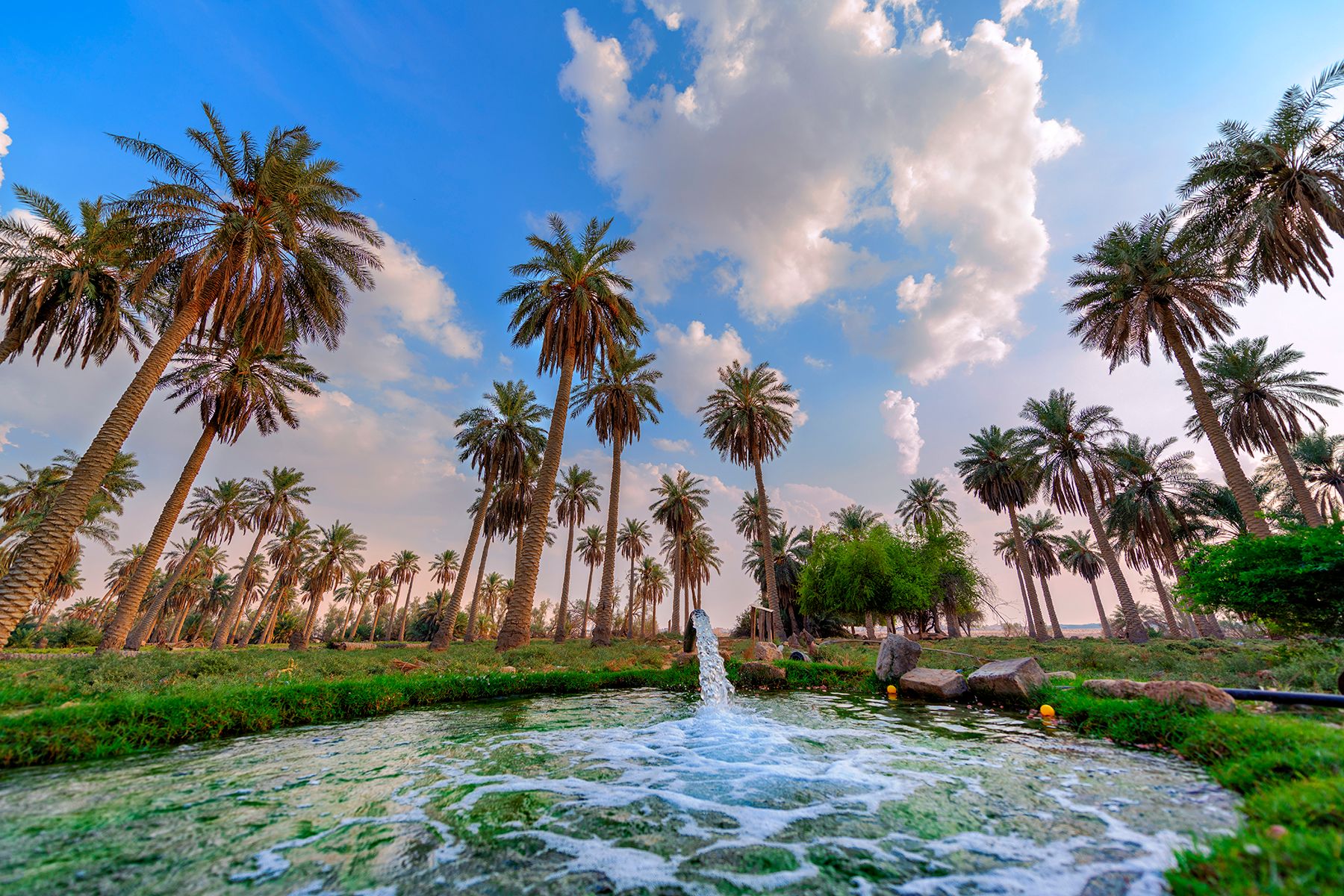
Al Ahsa Oasis - photographed by Abdullah Al-Shaikh
The beginning may be frustrating, but rest assured that the ending will be bright, whenever we combine hope and action, training and development, patience and perseverance. Do not expect that the path is difficult, but it is not easy. Today's challenges are increasing, and technologies are developing rapidly. You are always progressing with every step you take, so keep pushing forward and you will have good luck and success.
Thank you to “Ithraeyat" magazine for this space, and thank you to the "Ithraa" Center for its continuous and constant support for creators, and for creating a creative environment that does not believe in borders and restrictions, but rather advances the capabilities of the Kingdom's young men and women towards globalization.
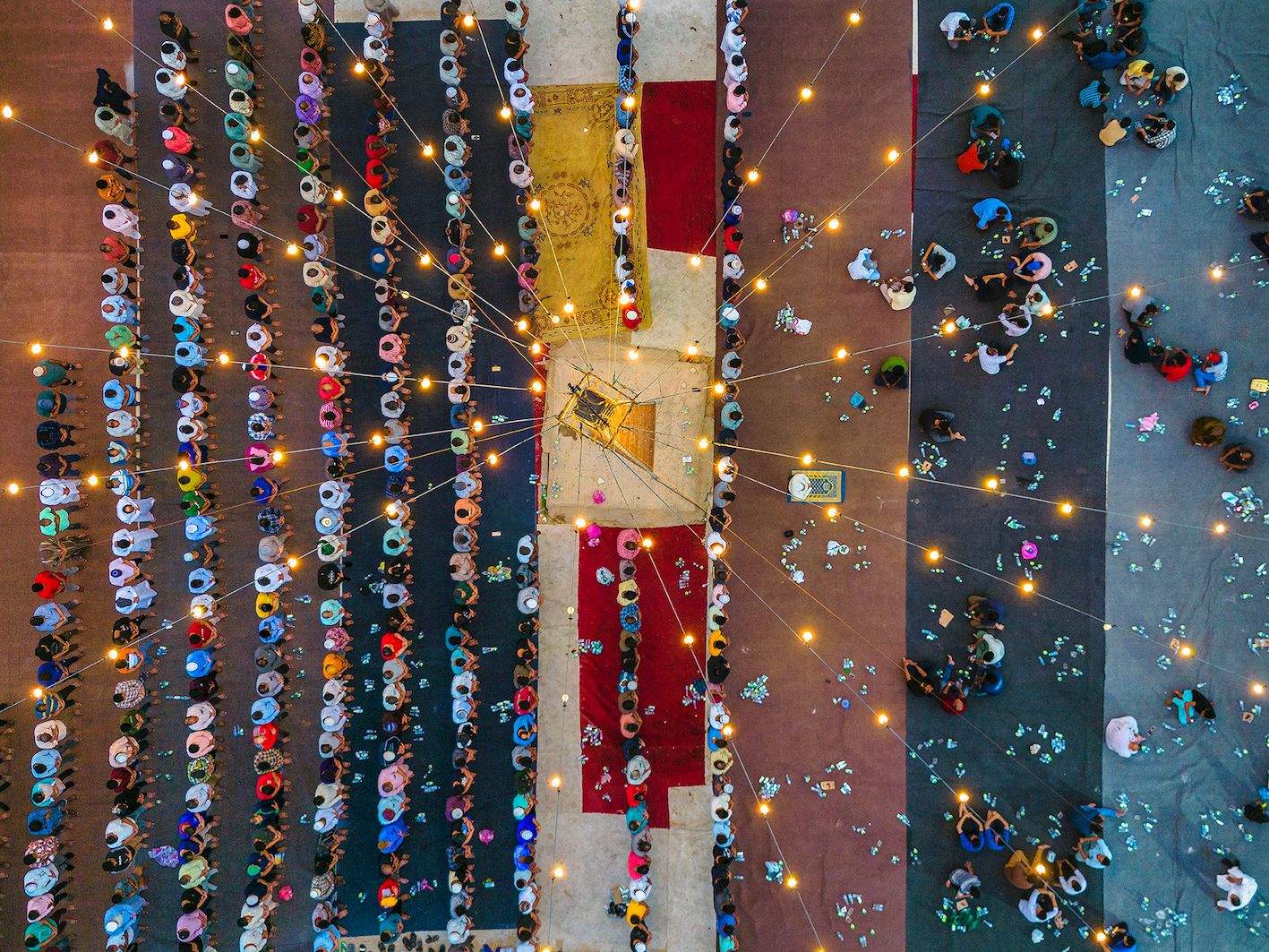
Ramadan in Al Ahsa - photographed by Abdullah Al-Shaikh
